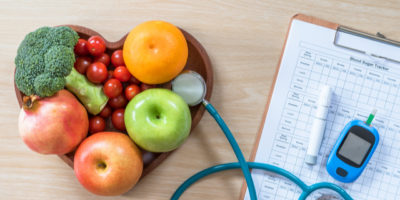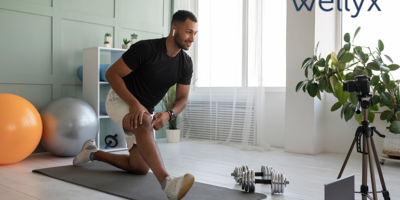Iron deficiency – nutritionist reveals all you need to know about this vital mineral
Nutritionist Rob Hobson explains everything there is to know about iron deficiency and how you can use food synergy to ensure good intakes of this mineral in your diet
It’s one thing to eat healthily, but it’s another thing to eat smart.
Synergies occur in every element of nature; for example bees rely on nectar for food, which leads to fertilisation as they carry pollen to other flowers.
The human body is also reliant on synergy as our muscles work in synergy, helping the body move and balance; enzymes react with food to facilitate digestion.
The food synergy effect also helps to increase the absorption of specific nutrients in food
Meanwhile, bacteria found in the gut works in synergy to break food down into nutrients to be delivered throughout the body.
The food synergy effect also helps to increase the absorption of specific nutrients in food, which can help ward off conditions that can hamper health such as iron deficiency.
A recent survey by wellbeing brand Healthspan found that 33 per cent of respondednt said their diet may lack iron with 39 per cent feeling this way because they didn’t know what foods contained vitamins and minerals.
Read More: 9 healthy recipes with food combinations guaranteed to super-boost your health
Nutritionist Rob Hobson, Head of Nutrition at Healthspan, reveals everything we need to know about iron deficiency and how we can ensure we have enough in our diet through combining the correct vitamins and nutrients.
What is iron?
Iron is a vital component of haemoglobin, a protein found in red blood cells that carry oxygen around the body.
This mineral is essential for healthy red blood cell production. Iron is also involved in the immune system, energy production, DNA synthesis, and muscle function.
Foods of animal origin offer the richest and most absorbable forms of iron. Sources include red meat, offal, mussels, eggs, and oily fish. Plant foods also provide a good source of iron, although it is less readily absorbed in the body.
This mineral is essential for healthy red blood cell production
Plant sources include fortified foods such as breakfast cereals, beans, pulses, lentils, seeds, dried fruit, and dark green leafy vegetables.
Increasing your intake of foods rich in iron and supplementing the diet are vital strategies but understanding how to combine foods in a clever way using food synergy is a helpful way to maximise the absorption of this mineral from the food you eat.
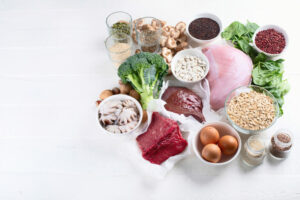
How much iron do we need?
Women have a higher requirement for iron, with a daily recommended intake of 14.8mg per day. This higher requirement is primarily down to the effects of their monthly cycle.
Pregnant women may also have a higher requirement for iron across their pregnancy and more so during the third trimester due to the baby’s growth demands.
the survey shows that 25% of women are not getting enough iron in their diet
The latest NDNS survey has shown that 14 per cent of adults are not getting enough iron in their diet. Women are at greater risk of deficiency than men, and the survey shows that 25% of women are not getting enough iron in their diet.
This low intake is exacerbated by blood loss due to women’s menstrual cycle. More worryingly, 49% of teenage girls have been shown to have inadequate intakes of iron.
What are the symptoms of iron deficiency?
Iron deficiency can lead to a specific type of anaemia related to this mineral, and the symptoms include:
- Unusual weakness and fatigue
- Poor concentration
- Pale complexion
- Brittle nails
- Muscle soreness
- Recurrent infections
- Always feeling cold
- Breathlessness
If you think you may be at risk, the first course is to visit your GP, who can run a blood test to assess your status. Suppose your results show a low iron level.
In that case, you will be advised to take iron supplements such as Healthspan Iron Care (£6.95 for 120 tablets) and be informed about the foods you should be including more of in your diet.
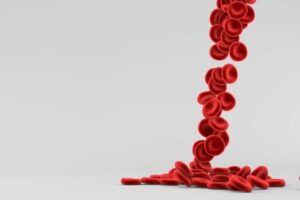
Who is at greater risk of iron deficiency?
Women are always going to be an at-risk group which relates to their menstrual cycle and also an increased need during pregnancy put upon by the growing baby.
The third trimester is a particular time during pregnancy when women can experience more rapid iron losses to support the baby’s growth. Some women may also experience higher blood losses during labour, leaving them at greater risk of anaemia.
People following a restrictive diet may be left at greater risk of iron deficiency, including those following a vegan diet.
A vegan diet can offer more than enough iron as long as people are aware of the types of foods they need to include in their diet to meet their nutritional needs.
Female athletes are considered a high-risk group for iron deficiency (both with or without anaemia). Iron status in female athletes may result from a combination of factors, including diet, menstruation, increased iron loss associated with haemolysis (destruction of red blood cells), sweating, gastrointestinal bleeding, and exercise-induced inflammation.
People following a restrictive diet may be left at greater risk of iron deficiency
Younger female athletes are also at a greater risk of iron deficiency which is part of a phenomenon known as the female athlete triad.
This is more likely to occur in young female athletes involved in endurance sports (long-distance runners, triathlon) and those requiring a lean physique such as swimming and gymnastics.
Three key symptoms characterise this group:
- Low energy availability with or without disordered eating
- Menstrual dysfunction
- Low bone mineral density
Iron deficiency is a common symptom of this group and contributes to poor health and compromised performance.
Iron deficiency may also impact vitamin D status, according to research published in the journal Nutrients.
This research focused on female athletes and found that the number of women with vitamin D deficiency was higher amongst those with iron deficiency (75%) than those with normal iron status (48%).
This suggests that iron deficiency’s influence on vitamin D status is more significant amongst healthy, physically active females.
However, more research is needed to understand the mechanism that underpins their mutual dependence.
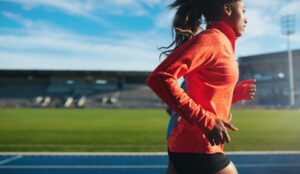
How can food synergy help people to get enough iron in their diet?
Including more iron-rich foods is the priority for anyone concerned about their iron intake. If you are low in iron, then a supplement will help you get your levels back up to scratch.
It’s worth noting that the findings from the NDNS survey relate to food intake but bear no consideration to the absorption of iron from the foods eaten.
So, how you combine foods should also be a consideration, which is food synergy and should be a key consideration to anyone trying to increase their levels of iron.
Combine plant sources of iron with vitamin C
Vitamin C helps the body to absorb iron more efficiently from plant foods. The simplest example is to drink a glass of orange juice with your fortified breakfast cereal.
If you prefer yoghurt with granola, then also add some chopped berries. Another example is to include plenty of green veggies with tofu stir fry or curry, which are not only a source of vitamin C but another source of iron.
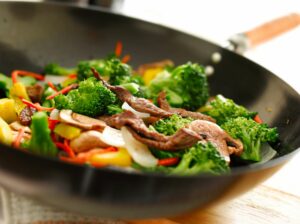
Combine copper-rich foods with iron
Copper helps absorb iron and can be found in seeds, dark chocolate, chickpeas, cashew nuts, lentils, and dried fruit.
These foods are easy to combine with iron-rich foods. A good example includes chickpeas or lentils alongside leafy greens and tofu in vegetarian dishes such as curries or tagines.
Another simple suggestion is to top your breakfast cereal with nuts and dried fruit.
Beware of negative food synergies
Food synergy can also work in the opposite direction in the case of iron, so this is worth bearing in mind, especially if you are trying to increase your levels.
Tannins found in your everyday cup of tea can inhibit the absorption of iron so avoid drinking tea with your meals.
Certain supplements may also work against each other such as calcium and iron
Compounds called phytates can also inhibit the absorption of iron. These are found in beans and wholemeal foods, which ironically are also a good source of iron. Soaking beans, pulses, and lentils before you use them helps lessen the effect of phytates.
Certain supplements may also work against each other such as calcium and iron. While this interaction has not been definitively established, if you take both iron and calcium supplements, it may be prudent to take them at different times.








